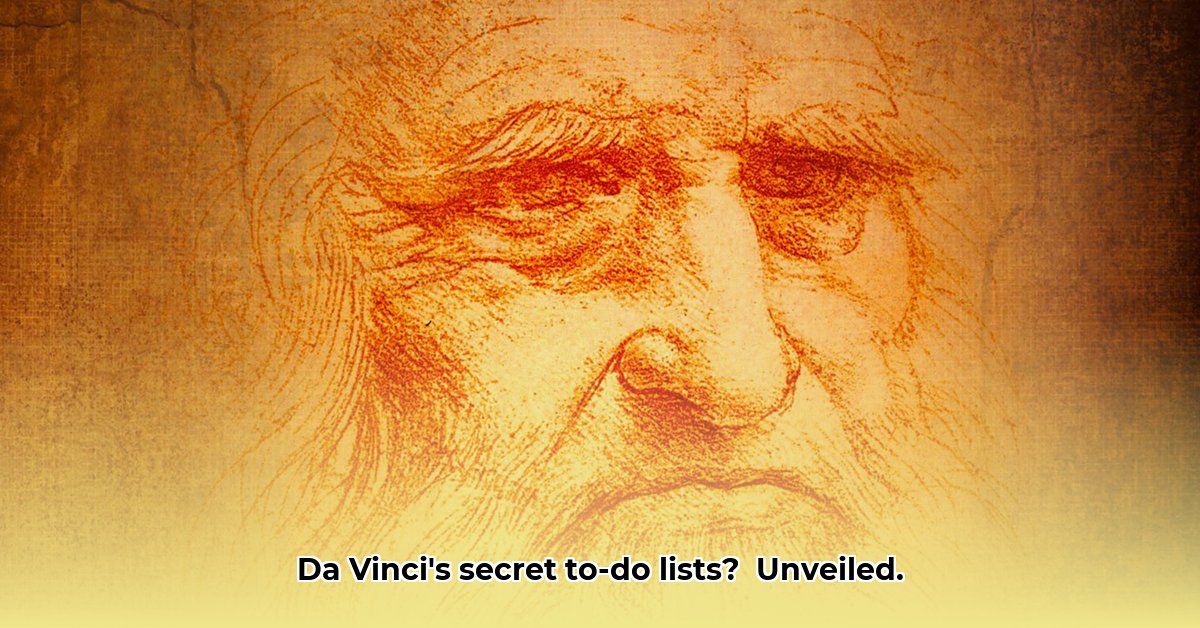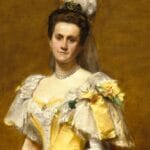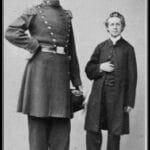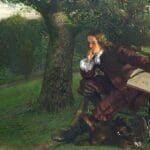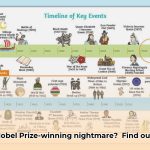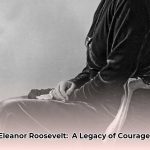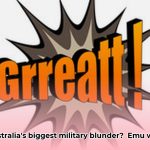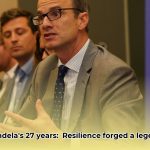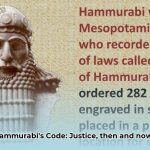We often picture Leonardo da Vinci as a genius blessed with effortless brilliance. But what if his secret wasn’t just innate talent, but a meticulous approach to organization? This article explores Da Vinci’s to-do lists—small scraps of paper that offer a revealing look into his working methods, innovation processes, and project management strategies. By examining these lists, we’ll uncover how he managed his diverse interests, achieved so much, and collaborated with others. Prepare for a fresh perspective on this iconic Renaissance man, drawn directly from his personal notes and plans. You’ll see how Da Vinci strategically employed surprisingly innovative project planning approaches. For more on historical to-do lists, see this fascinating example.
Leonardo da Vinci’s To-Do Lists: A Rare Glimpse into a Genius Mind
Leonardo da Vinci: instantly, the name conjures images of the Mona Lisa, innovative flying machines, and incredibly detailed anatomical drawings. But beyond these monumental achievements lay a system of organized thought, now unveiled through his meticulously kept to-do lists. These lists provide a fascinating glimpse into Da Vinci’s multifaceted pursuits and daily life. Decoding these lists reveals the surprising strategies that fueled his innovation and project management.
A Day in the Life: From Birds to Bridges, A Non-Stop Quest
Imagine beginning your day as Leonardo da Vinci. Judging by his lists, it would be filled with incredibly diverse activities, jumping from one intense focus to another. One day, he might observe the flight of birds, sketching aerodynamic principles gleaned from their movements. Another day might involve anatomical dissection, intensely studying the intricate workings of a human heart. The afternoon could find him designing a new and improved crossbow or adding subtle nuance to the Mona Lisa’s enigmatic smile. Evenings might be spent carefully noting the flow of the Arno River for an ambitious canal project. His diverse interests—art, science, engineering—weren’t isolated disciplines; they intricately intertwined, constantly inspiring and informing each other. His to-do lists aren’t just reminders; they’re innovative scheduling tactics for a mind that refused to be confined.
This remarkable fluidity and the ability to seamlessly transition between artistic creation and rigorous scientific investigation is constantly highlighted by his to-do lists, demonstrating a mind that simply never rested. It’s a testament to his insatiable curiosity and an unyielding drive to deeply understand the world around him.
Da Vinci’s Scientific Obsessions: A Detailed Catalog of Boundless Curiosity
His relentless pursuit of knowledge is vividly illustrated by his lists’ constant emphasis on scientific inquiry. He delved deeply into understanding the fundamental principles of the natural world, meticulously applying that understanding to his inventions and artistic creations. Leonardo’s breathtaking artistic achievements relied heavily and directly on his detailed scientific exploration.
| Scientific Pursuit | Examples from Da Vinci’s Lists |
|---|---|
| Human Anatomy | “Dissect a human hand and carefully document all of its muscles and tendons, noting their individual functions and attachments,” “Study the intricacies of the human eye and its optical properties, paying close attention to how it perceives light and color,” “Obtain a human skull.” |
| Mechanics and Engineering | “Design a more efficient water wheel, incorporating new gear ratios to maximize power output,” “Improve the design of a war machine, focusing on increased range and accuracy,” “Sketch a self-propelled cart, powered by a spring mechanism.” |
| Hydraulics and Hydrology | “Observe the flow of a river over different terrains, noting the effects of erosion and sediment deposition,” “Design a canal system to irrigate farmland, calculating water flow rates and minimizing water loss,” “Study the behavior of liquids under different pressures.” |
| Optics and Light | “Experiment with lenses to understand precisely how images are formed, measuring focal lengths and angles of refraction,” “Study the refraction of light in water, observing how objects appear distorted beneath the surface,” “Understand the properties of shadows and reflections.” |
| Botany and Geology | “Observe the growth patterns of various plants, documenting their leaf structures and root systems,” “Study the formation of rocks and mountains, analyzing their composition and the forces that shaped them,” “Collect samples of different types of soil.” |
This table only scratches the surface of his countless explorations. His lists showcase a deep commitment to understanding the universe’s fundamental principles and relentlessly applying them to his creative pursuits. His intricate understanding of anatomy, for example, directly informed his ability to portray the human form with unparalleled realism in his art. Leonardo’s detailed notes are a powerful testament to his innovative and deeply integrated learning style.
Art and Science: Two Sides of the Same Inquisitive Coin
We often compartmentalize Leonardo as either an artist or a scientist, but his lists definitively demonstrate the inseparable connection between these two seemingly disparate realms. He might schedule “finish the sfumato effect on the Mona Lisa, paying close attention to subtle gradations of light and shadow” alongside “calculate the precise trajectory of a cannonball, accounting for air resistance and wind velocity.” His closely kept notebook entries reveal the constant cross-pollination of ideas—artistic sensibilities profoundly informed engineering designs, and meticulous scientific observations became a solid foundation for breathtaking artistic creations. Leonardo’s groundbreaking work forever blended innovative artistic techniques with rigorous scientific innovation.
Consider his incredibly detailed anatomical studies, which directly translated into the breathtakingly lifelike depictions of the human form that appear throughout his paintings and drawings. The realistic musculature wasn’t simply an artistic flair; it was firmly grounded in his deep knowledge of biology, knowledge painstakingly acquired through countless hours of scientific observation and dissection.
The Power of Collaboration: Weaving a Network of Brilliant Minds
Da Vinci’s genius wasn’t created in isolation, locked away in a tower. His to-do lists reveal a vibrant network of collaborators and diverse experts, clearly indicating a deep understanding of the power of teamwork and the incredible value of interdisciplinary collaboration. Numerous entries reference consultations with skilled engineers, brilliant mathematicians, experienced anatomists, and various other specialists, significantly highlighting his deep reliance on shared knowledge and diverse perspectives. Da Vinci wasn’t a lone genius; he was an insightful orchestrator of collective intelligence, skillfully bringing together diverse talents to achieve truly remarkable results. Leonardo’s collaborative approach involved a carefully cultivated system of interdisciplinary teamwork.
The Enduring Legacy of the Lists: Much More Than Just Simple Tasks
Leonardo da Vinci’s fascinating to-do lists provide invaluable insights into the mind of a true polymath, vividly illustrating his relentless curiosity and the seamless integration of vastly diverse disciplines. These seemingly simple lists offer a powerful and enduring lesson for us all: even a genius of Da Vinci’s unparalleled caliber recognized the immense value of organization, proactive collaboration, and continuous exploration. They serve as a timeless testament to the often-unseen process that underlies great accomplishment, reminding us that truly extraordinary achievements are invariably built upon a foundation of meticulous preparation, unwavering dedication, and a commitment to lifelong learning. Ongoing research continues to unlock even more deeply buried secrets within these invaluable documents, promising even deeper and more nuanced insights into Da Vinci’s remarkable life and his groundbreaking interdisciplinary and innovative work.
How Leonardo da Vinci’s To-Do Lists Reflected Innovative Renaissance Collaborative Learning Methods
Key Takeaways:
- Da Vinci’s to-do lists reveal an impressive range of interests, seamlessly blending science, art, and engineering, showcasing both his boundless curiosity and his remarkable fluidity between seemingly disparate fields.
- The lists definitively demonstrate a reliance on external expertise, with frequent requests for guidance from a wide range of specialists, clearly indicating a deeply ingrained collaborative approach to knowledge acquisition.
- His to-do items consistently integrate artistic creation, rigorous scientific investigation, and practical engineering, perfectly reflecting the Renaissance’s holistic view of knowledge and its emphasis on collaborative learning.
- The lists reveal a systematic approach to learning in which Da Vinci actively sought knowledge from diverse sources and recognized experts. This clearly illustrates the deeply collaborative nature of scholarly pursuit during the Renaissance period.
- Examining Da Vinci’s carefully crafted to-do lists provides a unique lens through which to understand the collaborative learning practices that were prevalent during the Renaissance, highlighting the immense value placed on diverse expertise, careful observation, and multifaceted approaches.
A Day in the Life of Da Vinci (as Revealed by His Invaluable To-Do Lists)
Imagine a typical day in the incredibly busy life of Leonardo. His lists suggest a whirlwind of intense activity, calculating the precise dimensions of Milan’s suburbs with incredible care, showcasing his remarkable skills of observation and precise measurement. Then, in stark contrast, acquiring a rare book on Milanese churches to fuel his artistic and historical research endeavors. This fascinating pattern perfectly embodies the innovative collaborative learning methods that defined the Renaissance. How did Leonardo da Vinci’s to-do lists reflect these groundbreaking Renaissance collaborative learning methods? The answer is clearly evident in his proactive consultations with a wide array of field experts.
Da Vinci’s Scientific Pursuits: A Detailed Checklist of Boundless Curiosity
Da Vinci’s detailed scientific inquiries, meticulously documented in his lists, included the following:
- Calculate the precise measurement of Milan and its surrounding suburbs.
- Discover the exact measurement of the Corte Vecchio (the courtyard located within the duke’s palace).
- Get a master of arithmetic to clearly show you how to accurately square a triangle.
- Get Messer Fazio to thoroughly explain the complex principles of proportion.
- Find a hydraulics expert who can effectively repair a lock, canal, and mill.
- Ask about the precise measurement of the sun.
This detailed list reveals a highly systematic approach to learning that was deeply rooted in the power of collaboration. He actively built and carefully cultivated a vast network of experts to enhance his knowledge.
Artistic Endeavors and Engineering Dreams: Parallel Paths on Da Vinci’s Innovative Agenda
Da Vinci’s lists effortlessly blend art and science, seamlessly placing tasks such as “Draw Milan” alongside challenging engineering problems, vividly illustrating the Renaissance ideal of the “universal man,” who was expected to be highly proficient in a multitude of diverse disciplines. He approached creativity in a profoundly collaborative way, constantly fueled by diverse expertise and perspectives. How did Leonardo da Vinci’s to-do lists reflect Renaissance collaborative learning methods so effectively? They showcase the interconnectedness of various fields and the immense potential for learning through open exchange and careful observation.
The Network: Da Vinci’s System of Collaboration and Consultation
Da Vinci actively consulted with a wide range of individuals, including:
- Messer Fazio (a highly respected professor of medicine and law)
- The Brera Friar (an expert on mechanics)
- Giannino (the highly skilled Bombardier)
- Benedetto Portinari (a prominent Florentine merchant)
- Maestro Antonio (an expert on mortars)
- Mastro Giannetto (an expert on crossbows)
- Maestro Giovanni Francese (an expert on the measurement of the sun)
These proactive consultations were active steps in his ongoing learning process. His lists reveal a man who was deeply embedded within a vibrant intellectual exchange, constantly learning from and contributing to the collective knowledge of his time. These diverse pursuits were highly collaborative, enriching his immensely diverse artistic and scientific work.
Da Vinci’s To-Do Lists: Renaissance Note-Taking Practices and Their Rich Historical Context
Key Takeaways:
- Da Vinci’s carefully crafted to-do lists offer a unique window into the brilliant mind of a true Renaissance polymath.
- His lists reveal a highly organized approach to his incredibly diverse projects and innovative ideas.
- The entries vividly showcase the interconnectedness of his artistic, scientific, and engineering pursuits.
- His meticulous note-taking clearly illustrates the collaborative nature of knowledge production during the Renaissance.
- Studying his lists provides invaluable insights into Renaissance intellectual life and the innovative methods of inquiry that defined the era.
A Day in the Life of Leonardo (As Meticulously Revealed by His Lists)
Imagine a typical day in Leonardo da Vinci’s incredibly busy life, pieced together from numerous entries scattered throughout his personal notebooks. He meticulously details the complex musculature of the human hand, carefully sketches a groundbreaking flying machine, and accurately calculates the precise trajectory of a cannonball. His lists reveal a mind that constantly jumped effortlessly between completely different disciplines and a diverse set of artistic styles. His lists reveal both meticulous organization and rigorous planning. Da Vinci’s To-Do Lists: Renaissance Note-Taking Practices and Their Historical Context unlock this apparent paradox.
Da Vinci’s Scientific Pursuits: A Detailed Checklist of Boundless Curiosity
Da Vinci’s boundless curiosity spanned an incredibly wide spectrum of diverse topics. His lists reveal a relentless pursuit of knowledge across a multitude of scientific fields.
| Scientific Field | Example Entries |
|---|---|
| Anatomy | “Study the precise proportions of the human body,” “Carefully dissect a human heart,” “Accurately draw all the muscles of the human face.” |
| Optics | “Observe the refraction of light,” “Experiment with different lenses,” “Study the detailed structure of the human eye.” |
| Mechanics | “Design a brand new type of gear,” “Calculate the precise force of levers,” “Improve the overall efficiency of pulley systems.” |
| Geology & Hydrology | “Observe the erosion of various rocks,” “Study the flow of water,” “Analyze the complex formation of vast mountain ranges.” |
This is just a small glimpse into the immense range of his tireless inquiries. His meticulously crafted lists are a powerful testament to the Renaissance ideal of the “universal man.”
Artistic Endeavors and Engineering Dreams: Parallel Paths
Leonardo’s notebooks reveal a fascinating interplay between the seemingly disparate worlds of art and science. His detailed studies of optics directly informed his innovative painting techniques, while his in-depth anatomical studies greatly enriched the realism of the figures that he portrayed in his art. Similarly, his challenging engineering problems expertly informed his artistic depictions of landscapes and machines. His multifaceted approach clearly shows the seamless integration of diverse fields and definitively illustrates Da Vinci’s To-Do Lists: Renaissance Note-Taking Practices and Their Historical Context.
The Network: A Powerful System of Collaboration and Consultation
Leonardo most certainly did not work in complete isolation. His lists clearly show a vast network of collaborators, influential patrons, and respected experts whom he actively consulted. These individuals were an integral part of a vibrant intellectual network that constantly augmented his own knowledge and understanding. His lists clearly showcase his remarkable collaborative problem-solving skills.
Da Vinci’s Multifaceted Genius: Exploring the Wide Range of Non-Artistic Tasks in His Fascinating To-Do Lists
Key Takeaways:
- Da Vinci’s detailed to-do lists reveal a highly organized and efficient mind.
- His scientific pursuits were seamlessly interwoven with his artistic endeavors, constantly informing and enriching each other.
- Collaboration and active consultation played a crucial role in his prolific output.
- His lists offer invaluable insights into his daily life, his diverse range of passions, and the meticulous methods that he employed.
- Studying his carefully crafted to-do lists provides a unique glimpse into the brilliance of the Renaissance mind.
A Day in the Life of Leonardo (as Revealed by his Remarkable To-Do Lists)
Stepping into the incredibly busy world of Leonardo da Vinci, his lists immediately show a relentlessly curious and inquisitive mind. The simple phrase “Finish the Mona Lisa’s enigmatic smile” is seamlessly followed by tasks such as “Study the complex flight patterns of various birds,” and “Create detailed anatomical sketches with precise notes on engineering a groundbreaking flying machine.” His to-do list brilliantly reflects a mind constantly shifting effortlessly between artistic creation, rigorous scientific investigation, and the mundane, but necessary, task of purchasing pigments for his paintings.
Da Vinci’s Scientific Pursuits: A Detailed Checklist of Boundless Curiosity
Da Vinci’s personal notebooks are filled with a vast array of detailed observations, groundbreaking inventions, and innovative scientific ideas. His detailed to-do lists offer a fascinating glimpse into the boundless depths of his scientific curiosity.
| Category | Example To-Do List Items |
|---|---|
| Anatomy | “Dissect a human heart with great care,” “Draw the complex musculature of the human hand in meticulous detail.” |
| Botany | “Study the specific growth patterns of various plants,” “Sketch a wide variety of local flowers, noting their unique features.” |
| Engineering | “Design an innovative flying machine,” “Improve the overall design of a cannon to increase its range and accuracy.” |
| Hydraulics | “Observe the complex flow of moving water,” “Design a more efficient and powerful water wheel for various applications.” |
| Geology | “Study the diverse formations of local rocks,” “Analyze the chemical composition of various soils from different regions.” |
These diverse entries clearly show a relentless pursuit of in-depth knowledge across a wide range of scientific fields.
Artistic Endeavors and Engineering Dreams: Parallel Paths on Da Vinci’s Innovative Agenda
The clear lines between art and science were constantly blurred for Da Vinci. His artistic commissions often directly informed his scientific inquiries, and his intricate anatomical studies invariably enhanced the breathtaking realism of his paintings. Similarly, his innovative engineering sketches display both a keen attention to detail and a deep understanding of form, qualities that are also beautifully mirrored in his stunning works of art. His unique to-do lists highlight this constant and fascinating interplay between the seemingly disparate disciplines of art and science.
The Network: Da Vinci’s System of Collaboration and Consultation
Da Vinci’s carefully crafted to-do lists often reveal the names of various collaborators and consultants whom he sought advice from on a regular basis. Phrases such as “Meet with the Duke of Milan to discuss potential commissions,” “Consult with the leading anatomist to clarify certain details,” and “Discuss the latest engineering advances with [Name]” clearly demonstrate that his remarkable genius emerged, at least in part, from a constant exchange of diverse ideas and expertise. He actively sought advice, freely exchanged invaluable information, and fully engaged with his surrounding community. His lists clearly demonstrate the critical importance of both diverse networks and effective teamwork in achieving remarkable things.
- The Shocking History of Lobotomy: A Nobel Prize Nightmare - August 1, 2025
- Eleanor Roosevelt: A Champion of Human Rights: Enduring Legacy - July 31, 2025
- The Great Emu War: Australia’s Bizarre Military Failure: 1932’s Unlikely Defeat - July 31, 2025
